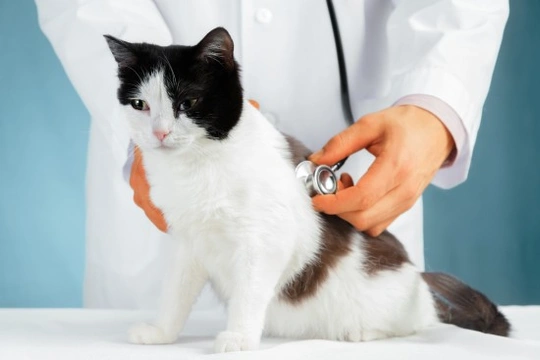
Feline Coronavirus - Coronavirus in Cats
Feline coronavirus (also sometimes referred to as FCoV) is a highly contagious viral condition that is transferred via the faeces of cats. While there are various different strains of coronavirus that affect other species of animals such as dogs, the feline form of the disease is specific to cats, and is not contagious to other species of animals.
What causes coronavirus in cats?
Coronavirus, like other viruses, is contracted by contact with the viral strain, which is passed from cat to cat by contact with affected animals. Faecal transmission is the most common route of infection, as affected cats will shed the virus copiously in their stools. Using the same area of the garden or outdoors as other cats when going to the toilet, sharing a litter tray with affected cats, and direct contact with other cats that have the virus are the easiest ways for the virus to be passed on.
It is estimated that over 40% of all cats in the UK will become infected with coronavirus at some point in their lives, and generally, cats that carry the virus will not suffer from any ill effects, and their owners will not usually even be aware that their cat is carrying the virus. Even among cats that do become ill with coronavirus, most will recover on their own.
Why is feline coronavirus a problem?
As the condition is generally mild and infected cats often show few or no symptoms of the condition, an obvious question is, “why is coronavirus a problem at all?” Feline coronavirus can cause problems for a small number of cats, who may develop diarrhoea as a result of the condition, and of course, they will shed the virus within their diarrhoea, where it can go on to infect other cats. Even healthy cats who have contracted the condition but not become ill, or that have only become mildly ill, can shed the virus strains in their normal faeces for several months after infection.
Feline coronavirus can also mutate and lead to a very serious and usually fatal condition called FIP, or feline infectious peritonitis. Feline infectious peritonitis may not necessarily develop at the same time as the feline coronavirus infection, and can in fact take months or even years to develop.
Symptoms of feline coronavirus
Feline coronavirus infection can be hard for the cat owner to identify, as symptoms are generally very mild, and in some cases, the condition does not present with any symptoms at all. Generally, coronavirus that is symptomatic will announce its presence with diarrhoea for several days, and potentially, a slightly runny nose with watery eyes as well.
Diagnosing the condition
While feline coronavirus usually runs its course without incident and will do nothing more than make your cat mildly sick for a few days, if you are considering getting a new cat or are concerned about the health of a cat with a compromised immune system, your vet can test for the presence of coronavirus strains. Usually this can be undertaken by means of a faecal sample, although blood tests may also be performed to be sure.
Treatment
Feline coronavirus rarely requires veterinary treatment, but if your cat goes off their food, has diarrhoea for more than a day or two or appears to be becoming dehydrated, you might want to get them checked out by your vet. Your vet can administer IV fluid therapy for dehydration, and monitor your cat for progression to feline infectious peritonitis. This is particularly important in cats whose immune system is weak or compromised, as they will be at risk of developing a more serious illness from the infection, and may be at heightened risk of the very serious FIP infection too.
Preventing feline coronavirus transmission
As mentioned, it is estimated that over 40% of cats will develop the virus at some stage of their lives, and as common as it is, there is no sure-fire way to avoid transmitting the condition from other cats.
Cats that go outside a lot and come into contact with other cats have more than likely already had the virus, and close-quarters environments such as boarding catteries and cat shows can provide exposure to the virus too.
Outside in the earth, the virus can remain live for just a couple of days after it has been shed in faeces, but within the home for cats that use litter trays, it can remain live for much longer. Dry cat litter and litter boxes can harbour the live virus for up to seven weeks after infection, so good hygiene protocols such as regularly disinfecting the litter tray and replacing all of the litter are essential. Removing faeces from the litter tray as soon as you notice that your cat has gone to the toilet is recommended too.
Stress can wreak havoc on your cat’s immune system, placing them at heightened risk of developing all sorts of opportunistic infections, so trying to keep your cat’s stress levels to a minimum can also help to avoid infection.



